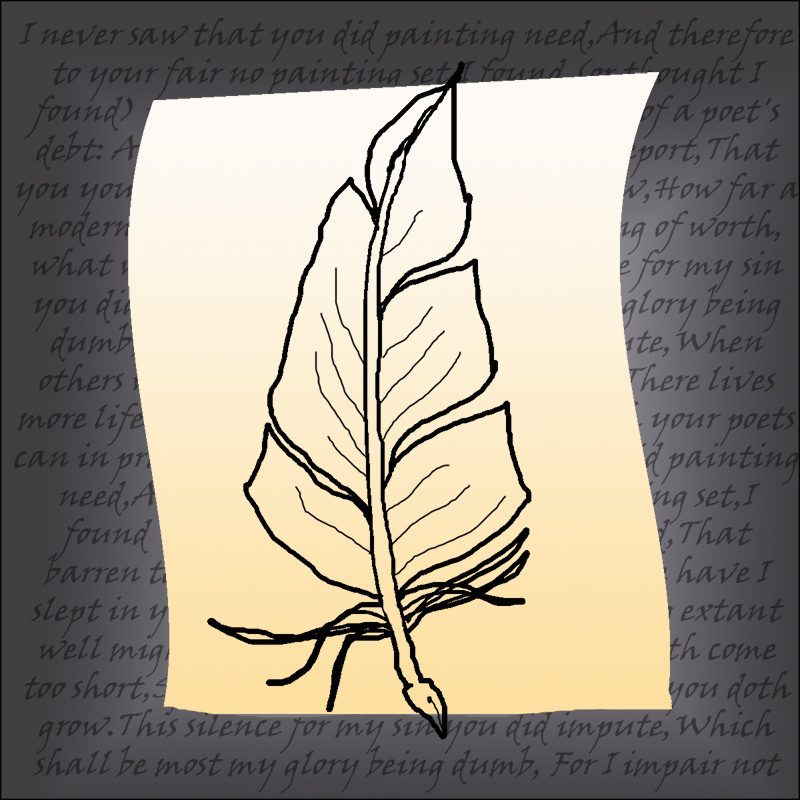Poetry: a late but promising entrant to Instagram fame


When Instagram came into the world six years ago, it was geared towards photographers. The point of this new social media platform was to tell stories visually, with only a short caption to complement the photograph.
Like Facebook, Instagram has evolved as more and more users test different ways they can use the platform. Instagram isn’t just for photography anymore. Poets are using it to post their words.
When I think of poetry on Instagram, I think of Rupi Kaur. She was the first poetry account I followed, and after that, I found a bunch of other modern poets that are showcasing their work on Instagram.
As someone with an English degree, I feel conflicted about Instagram as a platform for poetry. On one hand, it’s making poetry, a stereotypically pretentious or challenging literary form, more accessible to those who may not be buying poetry from a bookstore. But it’s also making poetry seem easier to create than it is. To me, there’s a slight undermining of the art form.
“It’s hard to say whether it denigrates the form, because I think the form itself is somewhat capacious,” said Tanis MacDonald, poet, author and English professor at Wilfrid Laurier University.
Capacious, meaning poetry does not have strict borders that the writer must work within. Concrete poetry or visual poetry, for example, must take into account the shape of the words and phrases. The words, and the shape the words make, must work together to create meaning and effect. Instagram is a great platform for poetry that also relies on a visual component.
Back to Rupi Kaur — she uses simple sketches to coincide with her words, too. While her poems posted on Instagram may only be three lines long, the image that corresponds with the text also pushes that meaning forward.
When poets market themselves on Instagram, their work is also reaching a wider audience. MacDonald explained that this isn’t a totally new idea.
“In the 18th century, poets would publish their poetry in broadsheets that could be bought for a nickel,” MacDonald explained.
Instead of waiting a year or so for a poet to publish a whole new book, new poems could be read more often and regularly.
“It was like 18th century Twitter,” MacDonald said. ‘“People would talk about it like it was news: Have you read so-and-so’s new broadsheet?”’
“In some ways, that’s an old idea that has come around again.”
We know Instagram is an excellent marketing tool. Almost every clothing store, restaurant, bar, etc. has an Instagram account. So maybe poets and writers should take advantage of it, too. It’s a fast way to stay updated with the writers you like, but also find new writers you haven’t heard of before. The popular tag, #poetsofig can help you find new writers very quickly.
“It gets people reading and thinking about poetry differently,” MacDonald said.
Popular Instagram poets, too, seem to be talking more and more about relatable, real life issues. It isn’t just the platform that’s accessible; it’s the content, too.
Writers like R.M Drake share brief poems about heartache and feeling lost. Kaur writes about feminism and sexual violence. R.H Sin writes about finding love, even when it seems hopeless. These modern Instagram poets are writing about relatable topics for a social media hungry audience. And they’re eating it up.
So maybe not every single one of R.M Drake’s 1.6 million followers owns a copy of his newest book, Broken Flowers, but I’d bet that the ones who do bought it because he’s marketing the shit out of it on his Instagram account.
Being “Instagram famous” doesn’t just apply to photography, anymore. The platform is always evolving and writers are adjusting their ways of presenting art in accordance with the changing times.
“Is it the ultimate platform for poetry?” MacDonald said. “Maybe not. But it’s a good way to supplement.”


